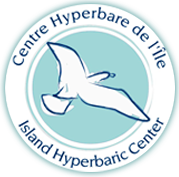If hyperbaric oxygen is so good why isn’t it better accepted by the medical mainstream?
If hyperbaric oxygen is so good why isn’t it better accepted by the medical mainstream?
Thomas M. Fox MAS, MS, CHT
The acceptance of hyperbaric oxygen therapy (HBOT) within the medical mainstream has been significantly influenced by a confluence of historical, scientific, and regulatory factors. A pivotal moment in shaping contemporary medical education and practice was the 1910 publication of the Flexner Report, formally titled “Medical Education in the United States and Canada: A Report to the Carnegie Foundation for the Advancement of Teaching.” Prior to this report, medical training was often unregulated, with proprietary programs prioritizing financial gain over rigorous educational standards. The Flexner Report catalyzed a transformation in medical training by advocating for a standardized curriculum rooted in scientific principles, thereby ensuring that physicians were adequately equipped to practice evidence-based medicine.
Consequently, the report’s emphasis on scientific rigor generated resistance towards therapies not grounded in conventional biomedical paradigms, including HBOT. This historical contempt for non-standardized medical practices persisted as the medical community sought to align itself with empirical evidence and established medical protocols. Despite HBOT demonstrating therapeutic efficacy for various conditions, its non-acceptance within mainstream medicine can be attributed to the enduring legacy of the Flexner Report’s influence, which led to skepticism about interventions lacking robust scientific validation and regulatory endorsement. Thus, the intersection of historical, educational, and regulatory dynamics continues to shape the discourse around the acceptance of innovative therapies like HBOT.
Hyperbaric oxygen therapy is an effective two-part treatment option in which patients breathe oxygen with over 90% purity under increased atmospheric pressure. Its remarkable ability to help with conditions related to hypoxia and inflammation is truly impressive. A recent breakthrough has wonderfully shed light on the scientific foundation of HBOT, marking an exciting step forward in our understanding!
The 2019 Nobel Prize in Physiology or Medicine was awarded to William G. Kaelin Jr., Sir Peter J. Ratcliffe, and Gregg L. Semenza for their discoveries on how cells sense and adapt to oxygen availability. This groundbreaking work has significant implications for various medical fields, including the potential mainstreaming of hyperbaric oxygen therapy (HBOT).
The groundbreaking discoveries highlighted by the Nobel Prize bring exciting potential for the acceptance and application of Hyperbaric Oxygen Therapy (HBOT):
1. Understanding Oxygen Sensing: This remarkable research sheds light on how cells sense and respond to oxygen fluctuations, strengthening the scientific foundation and application for HBOT, which delivers oxygen at greater than 90% under increased pressure to enhance tissue oxygenation.
2. Targeting Hypoxia: Insights into how cells react to low oxygen levels present new opportunities to utilize HBOT for conditions where oxygen supply is insufficient, such as chronic wounds, ischemic injuries, and certain neurological issues.
3. Therapeutic Applications: By unlocking the pathways involved in oxygen sensing, researchers are empowered to explore how HBOT can effectively engage these pathways to foster healing and recovery across various medical conditions.
4. Research and Development: The recognition of oxygen biology through the Nobel Prize is poised to ignite further research into HBOT and its underlying mechanisms, paving the way for robust clinical evidence and wider acceptance in the medical field. Key to the wider acceptance is the developing and the use of a study design which allows adequate assessment of the effectiveness of HBOT. This has impeded the evaluation of the effectiveness of this treatment option.
5. Clinical Guidelines: As we deepen our understanding of oxygen sensing and its critical role relieving hypoxia and inflammation, their impact in maintaining health and addressing disease will be realized. We may see HBOT becoming integrated into clinical guidelines for conditions where oxygen modulation can make a significant difference.
In summary, the 2019 Nobel Prize in Medicine opens new avenues in oxygen biology, enhancing the scientific rationale for HBOT and promoting its incorporation into mainstream medical practice, which offers great promise for patient care.
